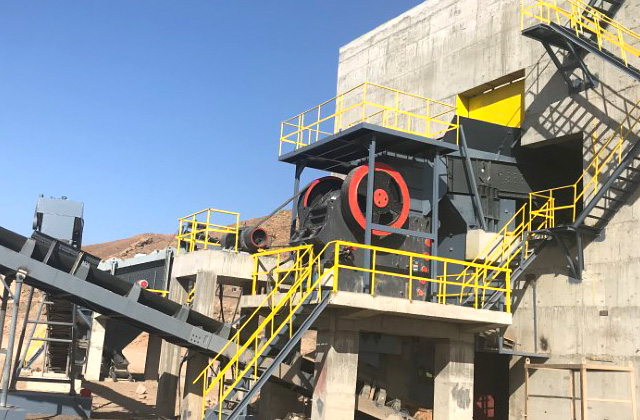A metal ore crushing and screening plant plays a crucial role in the extraction of valuable metals from raw ores. This process involves breaking down large chunks of ore into smaller pieces, followed by screening to separate the desired metal-bearing materials from the rest. The efficiency and design of such a plant are critical for the overall success of mining operations. In this essay, we will explore the key components and functions of a typical metal ore crushing and screening plant.

1. Primary Crushing: The process begins with primary crushing, where large chunks of raw ore are fed into a crusher. This initial stage aims to reduce the size of the ore to a manageable level. Crushers can vary in types, such as jaw crushers, gyratory crushers, or cone crushers, each designed to handle different types of ores and hardness levels.
2. Secondary Crushing: Following primary crushing, the ore may go through secondary crushing to further reduce its size. Secondary crushers can be cone crushers or impact crushers, and they play a crucial role in breaking down the ore into finer particles. This step is essential to prepare the ore for the subsequent stages of processing.
3. Screening: After the ore is adequately crushed, it moves on to the screening process. Screening involves separating the ore into different sizes based on particle dimensions. This is achieved using screens or sieves with specific opening sizes. The goal is to ensure that the material sent for further processing is of the desired size, while oversized or undersized particles are redirected for additional crushing or removal.
4. Conveyor Systems: Conveyor systems are integral to the smooth operation of the crushing and screening plant. They transport the crushed and screened ore between different stages of the process. Well-designed conveyor systems enhance efficiency and minimize manual handling, contributing to a safer and more productive mining environment.
5. Storage and Stockpiling: Once the ore is properly sized and screened, it is often stored in stockpiles before further processing. This allows for a consistent feed to downstream processing units and provides a buffer for variations in production rates or processing demands.
6. Mineral Separation: In some cases, the ore may undergo additional processes for mineral separation. This can involve methods such as magnetic separation, flotation, or leaching to extract specific metals from the ore concentrate.
7. Environmental Considerations: The design and operation of a metal ore crushing and screening plant must also take into account environmental considerations. Dust control measures, water management systems, and proper waste disposal practices are essential to minimize the impact of mining operations on the surrounding ecosystem.
8. Automation and Technology: Modern crushing and screening plants often incorporate advanced automation and monitoring technologies. These technologies improve process control, efficiency, and safety. Remote monitoring and control systems enable operators to optimize plant performance and respond quickly to changing conditions.
Metal ore crushing and screening plant is a complex and vital component of the mining process. Proper design, efficient operation, and attention to environmental considerations are crucial for the success and sustainability of mining operations. Advances in technology continue to enhance the efficiency and safety of these plants, contributing to the responsible and sustainable extraction of valuable metals from the Earth.
